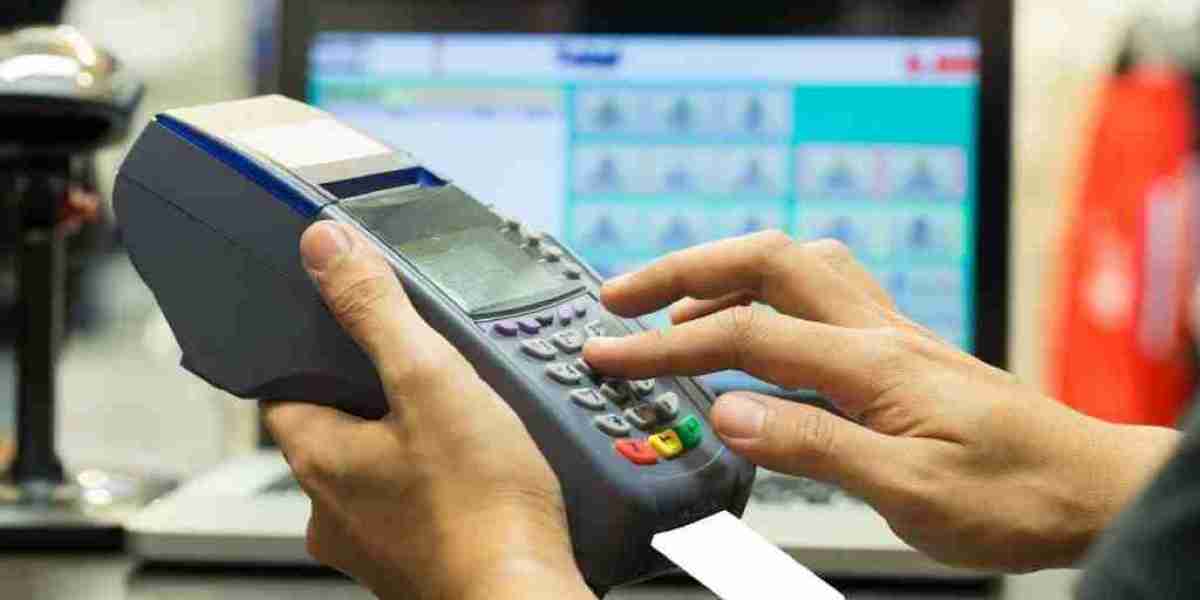The POS payment market has witnessed significant transformation in recent years, fueled by technological innovations, the rise of digital payments, and changing consumer preferences. For global brands seeking to expand their footprint in this dynamic market, developing effective strategies is crucial to gaining a competitive edge and capitalizing on the growth potential of the POS payment ecosystem.
As businesses increasingly embrace cashless transactions, the demand for advanced Point of Sale (POS) solutions has surged, offering a lucrative opportunity for companies to tap into emerging and established markets. This article explores key expansion strategies for global brands aiming to succeed in the evolving POS payment market.
1. Adapting to Local Market Needs
One of the key strategies for global brands entering the POS payment market is to tailor their offerings to meet the specific needs of local markets. Understanding regional consumer behavior, preferences, and payment habits is critical for ensuring successful adoption.
Key Actions:
Local Payment Preferences: In some countries, mobile payments, contactless cards, or QR code-based payments are more popular, while in others, traditional card payments dominate. Global brands should ensure that their POS systems are compatible with local payment methods to maximize adoption.
Language and Currency Support: Localizing POS software to support regional languages and currencies can enhance the user experience and facilitate smoother transactions for both merchants and consumers.
Compliance with Local Regulations: Each region has its own set of payment regulations and security standards. Global brands must ensure that their POS systems comply with local legal frameworks, such as PCI DSS (Payment Card Industry Data Security Standard) or GDPR (General Data Protection Regulation) in Europe.
By customizing POS solutions to meet the needs of specific markets, global brands can increase acceptance and drive faster growth in diverse regions.
2. Partnerships with Local Payment Providers and Financial Institutions
Forging strategic partnerships with local payment providers and financial institutions is another effective strategy for expanding in the POS payment market. Collaborating with established players in target markets can provide valuable insights, increase credibility, and speed up market penetration.
Key Actions:
Collaboration with Local Banks: Partnering with local banks enables global brands to offer integrated POS solutions that work seamlessly with regional banking systems. This can facilitate smoother transactions and encourage merchants to adopt POS systems.
Payment Gateway Partnerships: Global brands can team up with local payment gateways to ensure their POS systems are compatible with a wide range of payment options, such as credit cards, debit cards, e-wallets, and mobile payments.
Merchant Acquirer Partnerships: By working with merchant acquirers, global brands can offer bundled solutions to businesses, including POS terminals, payment processing, and financing options, making it easier for merchants to adopt cashless payment solutions.
These partnerships help brands navigate local market challenges, build trust with customers, and accelerate adoption of POS solutions.
3. Leveraging Mobile POS (mPOS) Solutions
Mobile POS (mPOS) systems are becoming increasingly popular, especially in emerging markets, due to their affordability and portability. Global brands can leverage this trend by offering mPOS solutions that cater to small and medium-sized businesses (SMEs) and mobile-centric markets.
Key Actions:
Affordable mPOS Systems: Global brands can design cost-effective mPOS solutions using smartphones or tablets that allow businesses to accept payments on the go. This is particularly beneficial for businesses with limited capital investment or for merchants in remote areas where traditional POS terminals are impractical.
Cloud-Based Solutions: mPOS solutions can be integrated with cloud-based systems, enabling real-time data analytics, inventory management, and customer relationship management (CRM). This provides added value to businesses, making mPOS systems an attractive option.
Targeting SMEs and Microbusinesses: By focusing on SMEs and microbusinesses, global brands can tap into a large untapped market. Offering scalable and affordable POS solutions can drive widespread adoption and create strong customer loyalty.
As the demand for mPOS systems grows, global brands can use these solutions to expand their presence and gain a foothold in new markets, especially where traditional POS systems are less prevalent.
4. Emphasizing Security and Fraud Prevention
Security is one of the top concerns for businesses and consumers in the POS payment market. To gain trust and build credibility in new markets, global brands must prioritize security features and fraud prevention in their POS systems.
Key Actions:
Implement Advanced Encryption and Tokenization: Ensuring that POS systems are equipped with end-to-end encryption and tokenization technology can protect sensitive payment data and reduce the risk of fraud. These features are essential for building trust with merchants and consumers.
Compliance with Global Security Standards: Global brands should adhere to international security standards, such as PCI DSS, to demonstrate their commitment to secure payment processing. Compliance ensures that POS systems are designed to protect customer data and mitigate the risk of cyberattacks.
User-Friendly Security Features: Providing businesses with tools to monitor and detect fraudulent activity can help prevent financial losses. Global brands can offer integrated fraud detection features and real-time alerts, making it easier for merchants to manage security.
By emphasizing robust security features, global brands can differentiate themselves from competitors and establish themselves as reliable and secure payment solutions providers.
5. Expansion into Emerging Markets
Emerging markets offer a vast opportunity for global brands looking to expand in the POS payment market. Countries in Asia, Africa, and Latin America are experiencing rapid growth in digital payments, driven by increased smartphone penetration, mobile banking, and the shift toward cashless economies.
Key Actions:
Targeting Unbanked Populations: Many emerging markets have large unbanked populations that rely on mobile money and digital wallets. Global brands can offer POS solutions that cater to these consumers by integrating mobile payment platforms and offering alternative payment methods.
Cost-Effective Solutions: In emerging markets, cost is often a key consideration for businesses. Global brands should offer affordable POS systems that provide essential features without unnecessary complexity, helping businesses transition to cashless payments without high upfront costs.
Expanding Payment Acceptance: In some emerging markets, cash is still king, but the rise of mobile payments and digital wallets presents a massive opportunity. By offering POS systems that support a variety of payment methods—such as mobile wallets, QR codes, and digital currencies—global brands can tap into new customer segments.
The rapid growth of digital payment adoption in emerging markets provides a fertile ground for global brands to expand their presence and capitalize on the growing demand for POS solutions.
6. Investing in Customer Support and Education
Customer support and education are critical for driving the adoption of POS systems, especially in new markets. Businesses, particularly small and medium enterprises (SMEs), may need assistance in understanding the benefits and operation of POS systems.
Key Actions:
Training Programs for Merchants: Offering training programs that help merchants understand how to use POS systems effectively can increase adoption and customer satisfaction. This can include in-person training, online tutorials, and customer support services.
24/7 Customer Support: Providing accessible and responsive customer support helps businesses resolve issues quickly and ensures that their POS systems remain operational. This is particularly important in markets where technical expertise may be limited.
Educational Campaigns for Consumers: Educating consumers about the benefits of cashless payments, security features, and how to use POS systems can drive adoption. Global brands can launch awareness campaigns through social media, community events, or partnerships with local organizations.
Effective customer support and educational initiatives foster long-term relationships and help build brand loyalty, leading to sustained growth in the POS payment market.
Conclusion
As the POS payment market continues to evolve, global brands must implement strategic expansion approaches to capture new opportunities in both established and emerging markets. By adapting to local market needs, forming partnerships with regional players, leveraging mobile and affordable POS solutions, emphasizing security, and investing in customer education, global brands can successfully navigate the complexities of the POS payment landscape.




